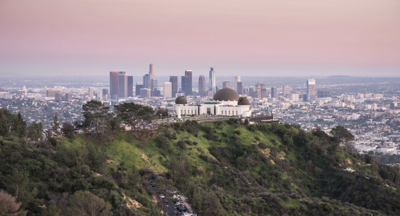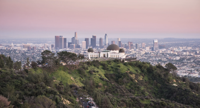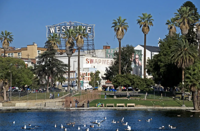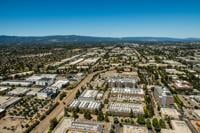
As some major U.S. cities funnel record-high investment in their parks, the future of green space remains uncertain in many other cities nationwide.
While parks are crucial to the social, physical and mental health of their communities, about one in three people in the U.S. — over 100 million people, including 28 million children — don’t have access to a park within a 10 minute walk of their home.
A groundbreaking report and survey newly released by the Trust for Public Land (TPL), however, finds that parks are “The Great Unifiers” for Americans across demographic and partisan lines.
This year’s ParkScore index, published by TPL annually since 2012, ranks park systems across the country’s 100 most popular cities based on five factors from the perspective of park users: acreage, amenities, investment, equity and access — defined as the percentage of a city with a park within a 10-minute walk of local homes.
The great, green unifiers
For the fifth year in a row, Washington, D.C. ranked first, narrowly outscoring, in order, Irvine, California; Minneapolis; Cincinnati; and St. Paul, Minnesota.
Roughly 21.5% of Washington, D.C. land is used for parks, with 99% of residents living within a 10-minute walk of the city’s 699 green spaces.
“Thanks to National Park Service lands that were designed when the city was first developed hundreds of years ago,” Washington, D.C. is the best model for “overarching trends we’re seeing across the country right now,” said Will Klein, director of parks research at TPL, at a Friday, May 23 American Community Media briefing on America’s urban parks.
For the first time, the 2025 TPL report includes a national survey of 4,000 demographically representative, politically stratified big-city park users nationwide.
The data found that “residents, regardless of political affiliation or any other lines of difference throughout the United States, value public parks and use them frequently, suggesting that parks are among the least polarized spaces in this country right now,” explained Klein.
Two-thirds of respondents — including 66% of Harris voters and 67% Trump voters — said they struck up a conversation with a previously unknown person at a park, with over half reporting a conversation with somebody of a different social or economic background.
Regardless of political splits, the number one place that respondents wished they’d gone more often in the past year to find joy was “anywhere outside,” and nearly four out of five respondents said they had a park where they felt comfortable and wanted to visit regularly.
Since the ParkScore index began in 2012, the percentage of big-city residents within a 10-minute walk to a park has risen from 68% to 76% nationwide.
“That’s millions of people who now have a park within walking distance that didn’t nearly 15 years ago,” said Klein, adding that the biggest reason for this increase “is communities coming together and deciding to open school yards for public use after hours and on weekends. 75 of the 100 biggest cities now do this … notably Atlanta.”
Atlanta: a green success story
Over the last year and a half, the city of Atlanta formed a coalition called the Atlanta Public Schoolyards project with TPS, the city’s public schools and local community organizations to adopt a joint use agreement opening all public school playgrounds and fields to city residents after-hours, while schools “have access to our swimming pools, golf courses and tennis centers for their students,” said Justin Cutler, parks and recreation commissioner for the City of Atlanta,
The agreement has already saved the Atlanta Public Schools district over $500,000 in potential use fees, and has boosted Atlanta’s 10-minute park walk percentage from 79% of residents in 2024 to over 82% in 2025.
“That may not seem like a significant jump, but the play fields it’s allowed us to add are real. Those combined to increase our park score by four points from 25 to 21, while just back in 2016 we were at 51,” said Cutler. “This has unlocked additional funding, including grants and nonprofit dollars, because now people across the country see that we have the resources to maintain our parks at a higher level.”
One out of every $5 spent on Atlanta’s parks and recreation comes from a local nonprofit.
Cutler said that key to opening Atlanta’s schoolyards was addressing community concerns about vandalism and crime.
“Recently, we’ve had two playgrounds set on fire. What if that happens now that kids aren’t able to participate? But that would happen regardless of whether they’re open or closed. Vandals will jump fences to cause harm,” he explained.
“By creating more activity after school, you have more eyes in the park, and you’re improving safety. You’re bringing more awareness to what’s happening in space. You’re creating more identity and more social cohesion. People don’t want to vandalize the space, because they have a sense of ownership,” Cutler added.
Greening LA
While overall investments in U.S. urban parks reached a record high this year, even accounting for inflation, only 5% of this investment comes from federal grants, and on the local level, some big cities still have far to grow — particularly Los Angeles, which ranked 90th out of 100 this year, dropping from 88 in 2024.
Of city residents, 38% — nearly 1.5 million Angelenos — do not live within a 10 minute walking distance to a park.
The city owns and operates 559 park sites over 16,000 acres, including 92 miles of trails.
“Access is an issue that is plaguing the city of Los Angeles,” said Guillermo Rodriguez, California state director at TPS. “We certainly saw during COVID, that for many communities, your backyard is your local park.”
The core of the issue is planning, funding and equity: The last time LA updated its Park Master Plan was in 1973, and while the city was above the national average for park funding just five years ago, it’s now significantly below, as investment has remained static.
Meanwhile, low-income neighborhoods have 73% less park space than high-income neighborhoods, while those of color have 66% than predominantly white neighborhoods.
The good news?
Last February, LA launched a landmark new Park Needs Assessment (PNA) initiative to collect and compile data citywide — including heat island severity, tree canopy cover, pollution burden, unemployment, housing burden, population density, safety, nearest-park distance and amenities like sport courts — into a PNA draft that will be published online by September and finalized by the end of the year.
Rodriguez said two projects he’s prioritizing are “opening up the LA River as a place for public enjoyment and recreation” and “unlocking the gates of our public schoolyards … What that needs is the City Council and the Los Angeles Unified School District, the second largest school district in the country, to come together and build a joint use agreement … like Atlanta has done so well.”
PNA surveys, community meeting details and updates are available in 11 languages online.
“A park is not just for recreation. They’re lifelines,” said Yvette Lopez-Ledesma, Greening America’s Cities fellow at Community Partners and a member of the city PNA steering committee.
“If you have a park in your neighborhood, you may have access to food that you didn’t before through a food bank distribution event at a park. There may be childcare services. When the fires happened, FEMA and other folks were distributing essential goods.”
“An investment in parks,” she added: “Ultimately, that’s what this is about. It’s about quality of life.”











(0) comments
Welcome to the discussion.
Log In
Keep it Clean. Please avoid obscene, vulgar, lewd, racist or sexually-oriented language.
PLEASE TURN OFF YOUR CAPS LOCK.
Don't Threaten. Threats of harming another person will not be tolerated.
Be Truthful. Don't knowingly lie about anyone or anything.
Be Nice. No racism, sexism or any sort of -ism that is degrading to another person.
Be Proactive. Use the 'Report' link on each comment to let us know of abusive posts.
Share with Us. We'd love to hear eyewitness accounts, the history behind an article.